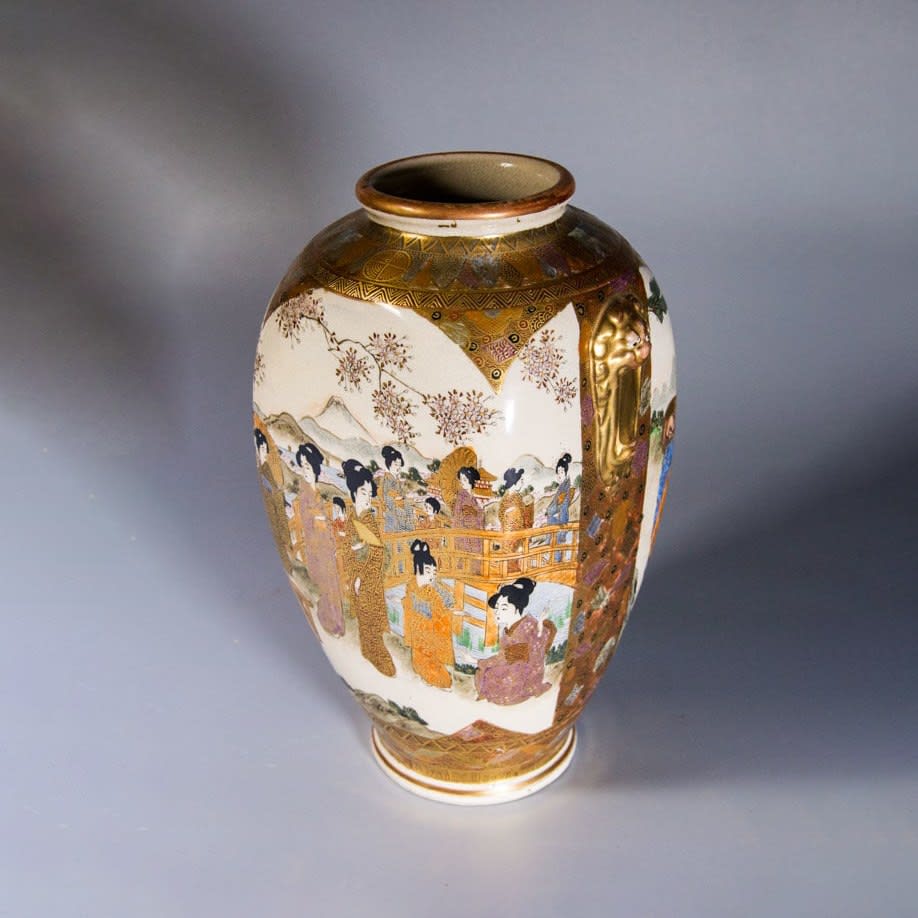Japanese Satsuma Pottery gilded vase, 20th Century CE
25.4 x 15.2 x 12.7 cm
10 x 6 x 5 in
10 x 6 x 5 in
RL.1130
Further images
A late 19th century-early 20th century impressive Japanese Satsuma pottery vase of the Meiji period (1868 - 1912), decorated by figurative scenes. On one side the figurative scene consists of...
A late 19th century-early 20th century impressive Japanese Satsuma pottery vase of the Meiji period (1868 - 1912), decorated by figurative scenes. On one side the figurative scene consists of a large number of female figures and children, all in sumptuous traditional Japanese costumes, standing over a bridge and besides a lake shore with trees, houses and mountains in the background.
The other side presents a scene of elderly male persons, characterised by halos and in various meditative postures, in a rural background of trees, flyings birds and mountains in the distance. The vase is in excellent condition with some slight wear to the gilt on the top and bottom rim. Satsuma ware is a type of Japanese pottery originating in the Satsuma Province, in the southern region of Kyushu island. Satsuma ware is usually divided into two distinct categories: the original plain dark clay early Satsuma, known as Ko-Satsuma and produced in Satsuma from around 1600, and the elaborately decorated export Satsuma, known as Kyo-Satsuma, whose ivory-bodied pieces began to be produced during the 19th century in various Japanese cities.
By adapting their gilded polychromatic enamel overglaze designs to appeal to the tastes of western consumers, manufacturers of the latter have managed to make Satsuma ware one of the most recognized and profitable export products of the Meiji period.
The other side presents a scene of elderly male persons, characterised by halos and in various meditative postures, in a rural background of trees, flyings birds and mountains in the distance. The vase is in excellent condition with some slight wear to the gilt on the top and bottom rim. Satsuma ware is a type of Japanese pottery originating in the Satsuma Province, in the southern region of Kyushu island. Satsuma ware is usually divided into two distinct categories: the original plain dark clay early Satsuma, known as Ko-Satsuma and produced in Satsuma from around 1600, and the elaborately decorated export Satsuma, known as Kyo-Satsuma, whose ivory-bodied pieces began to be produced during the 19th century in various Japanese cities.
By adapting their gilded polychromatic enamel overglaze designs to appeal to the tastes of western consumers, manufacturers of the latter have managed to make Satsuma ware one of the most recognized and profitable export products of the Meiji period.







